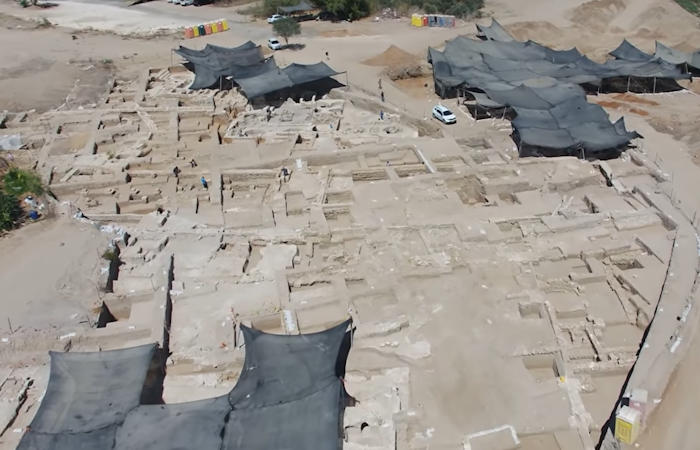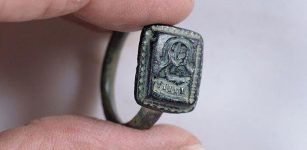Ancient Greek Amethyst Ring To Ward Off A Hangover Discovered At The World’s Largest Byzantine Wine Factory In Yavne, Israel
Jan Bartek – MessageToEagle.com – Being a wine taster may sound like an enjoyable profession to many but as we all know drinking too much can give you a hangover. Ancient people who were often rather superstitious believed there were some unusual means to prevent a hangover.
A magnificent 1,400-year-old amethyst Yavneh ring unearthed at an ancient Byzantine wine factory in Yavne, Israel has provided scientists with knowledge of ancient Greek superstitious beliefs.
The spectacular gold ring with the inlaid semi-precious amethyst stone. Copyright: IAA/Dafna Gazit
“The wine produced at Yavne was called in ancient times “Gaza or Ashkelon Wine” and was considered to be a high-quality wine. Archaeologists explain, “the wine produced in Yavne gained international fame and reached Europe and Africa. Everyone knew that this was a product from the Holy Land and wanted more and more of this wine. As previously reported on AncientPages.com, the world’s largest world’s wine factory from the Byzantine period was recently discovered in Yavne, Israel.
The wine was a white wine and named for the ports of Gaza and Ashkelon where the wine was sent for export”. liters of wine were produced for here the market every year and we should remember that the whole process was conducted by hands stored, thousands of broken and intact earthen amphorae (jars), and more.” 1
The discovery of the ancient amethyst ring set in gold at this particular site is a bit ironic though.
“Its size and ostentatiousness indicates it belonged to someone who wanted to flaunt their wealth,” Dr Amir Golani, an ancient jewelry expert at the Israel Antiquities Authority , told the Times of Israel.
In Greek mythology Dionysus was the god of wine. Theater and wine played an important role in Greece, so it’s understandable that the cult of Dionysus spread across the country.
The myth an amethyst ring could ward off a hangover originated in Greece and was widespread throughout the ancient world.
“Amethyst is a violet variety of quartz that ranges in colour from pale lilac to a deep reddish-purple. In Greek mythology, amethyst was rock crystal dyed purple by the tears of Dionysus, the god of wine and revelry.
The name of the semi-precious gemstone comes from the ancient Greek word ‘amethystos’ (αμέθυστος), meaning ‘not intoxicated’ – referring to the belief that the stone protected its owner from the effects of drunkenness.
Amethyst was kept as a talisman by affluent ancient Greeks who wore it, carved wine glasses from it, or even ground it into powder and added it to their wine in the belief that it would prevent intoxication and hangovers.
The connection between amethysts and sobriety dates back to at least 320 BC when it was referred to by the Greek poet Asclepiades of Samos in one of his poems,” the Greek City Times writes.
“It is possible that the splendid ring belonged to the owner of the magnificent warehouse, to a foreman, or simply to an unlucky visitor, who dropped and lost their precious ring, until it was finally discovered by us,” says Elie Haddad, archaeologist, and IAA excavation co-director.
World’s largest Byzantine wine factory where the ring was discovered. Credit: Antiquities Authority (IAA)
“Did the person who wore the ring want to avoid intoxication due to drinking a lot of wine?” Haddad speculates.
“We probably will never know.”
Excavations at the site continue and we can hope to learn more about new findings soon.
Written by Jan Bartek – AncientPages.com Staff Writer
Expand for references












